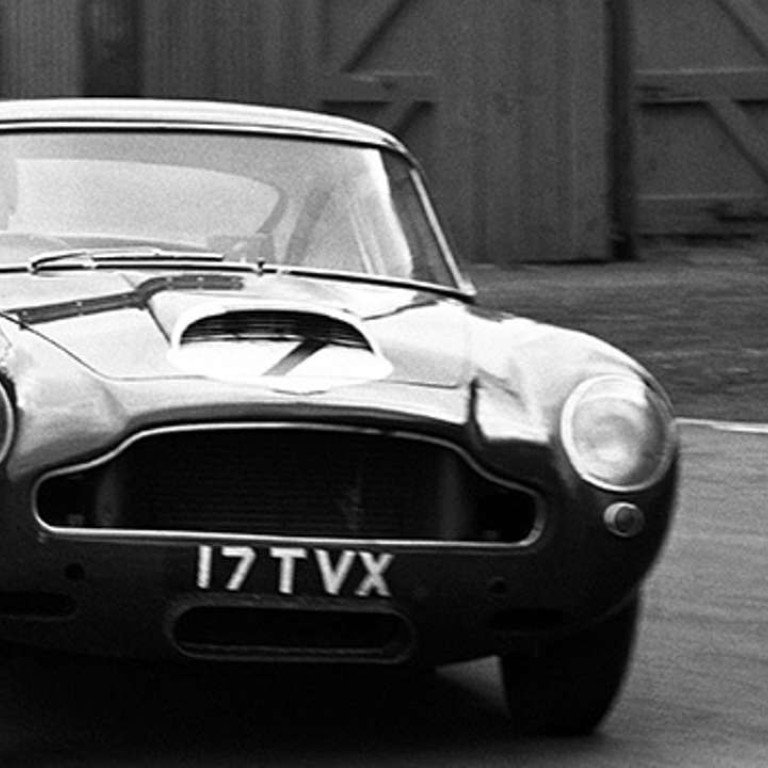
Continuation cars catch the fancy of aficionados in HK
Connoisseurs flock to restorations that look as good as originals and are worth their weight in investment
Retro-styled “continuation cars” are catching on overseas, and at least two manufacturers are keen to attract Hong Kong collectors. Continuations are largely small-run copies or restorations of classics made by craftsmen working from original factory drawings, but with better engines, brakes and other safety features. Purists call these models fakes, but fans say they run more reliably, look as good as original classics, and are rare investments.

“The few produced will be the most exclusive hand-built cars in the world,” Eagle says. Its design director, Paul Brace, says Eagle “would love to have an Eagle E-type in China. However, because we build them to order, having an agent isn’t really appropriate because they would not have a demonstrator car. We need to work personally with the client to ensure we build precisely the right car to suit their requirements”. Even so, Eagle is working on a Lightweight GT for an Indian client that will be released in 2018, Brace says.

Lister Motor Company has hand-built classic “continuation models” from the racing marque’s original plans and chassis jigs since 2013. Its Knobbly Stirling Moss tribute to the marque’s 1950s Grand Prix-winning car was presented last August at Pebble Beach Concours d’Elegance. The car costs US$1 million, largely because its body, engine sump, clutch and differential casing is in magnesium. This metal’s about 30 per cent lighter than aluminium, but can be hard to source and work.
In November, Cambridge-based Lister launched its Costin, based on a sleek, aluminium-bodied 1959 Le Mans racer. The new car is a 337hp Crosthwaite and Gardiner straight six, and hits 100km/h in four seconds, topping at about 270km/h. A new Costin costs £295,000 plus VAT for a race car version and £275,000 plus VAT for a road car, says Lister owner Lawrence Whittaker. The factory’s order lead time is two years and its order book is full until January 2019, he adds. However,Whittaker says the Hong Kong and China market “is very interesting to me, and no, we do not have an agent there”. The marque has “some new stuff coming online very soon”, he adds.

The Kenilworth-based Alvis Car Company has made limited-edition “Continuation Series” cars from the old marque’s drawings since 2011. It will show its range at the February 23-26 London Classic Car Show. Look out for its three-litre Graber; and a Bertelli Sports Coupe that is made from 1935 drawings. Its 170hp, 4.3-litre Alvis straight six engine is “faithful to the 1936 design”, and achieves 100km/h in about 10 seconds before topping at 190km/h, the company says.
The manufacturer also builds up to 25 versions of a Park Ward drophead coupe; a Vanden Plas tourer, and a Lancefield convertible with a concealed hood. All these bespoke retro classics could be the envy of Hong Kong’s Sunday drivers and wedding planners.

At the 2017 Retromobile exhibition in Paris, running from February 8 to 12, Jaguar Classic revealed how marques are making continuation collectibles of rare classics. The original 25 Jaguar XKSS were road-going conversions of the mid-1950s Le Mans-winning D-type, but nine were lost in a 1957 factory fire. Jaguar Classic first made six “continuation” Lightweight E-types in 2014 and then last November unveiled the first of nine “new original” XKSS at the Petersen Museum in Los Angeles. The cars are completely new, “with period chassis numbers from the XKSS chassis log”, the marque says. They take about 10,000 man hours to build and cost more than £1 million each.
The XKSS has a magnesium alloy body, and a 262hp 3.4-litre straight-six Jaguar D-type engine with new cast-iron blocks, new-cast cylinder heads and three Weber DC03 carburetors. The interior’s gauges, rivets, knobs and leather grain are made to 1957 specifications, but with modern safety updates. “The fuel cell, for example, uses robust, modern materials to support throughput of modern fuels,” Jaguar says.
Aston Martin revealed in December that it would make 25 DB4 G.T. continuation track cars, with deliveries due this autumn. Only 75 of the 3.7-litre Le Mans-winning car were built between 1959 and 1963, the marque says. “Of these, only eight were lightweight models, most of which survive today, and values now comfortably exceed £3 million,” Aston Martin says.
The continuations get a 340hp, two-spark straight six and a four-speed manual gearbox like the original car, but with a shorter wheelbase for a two-seater racer. Its body consists of thin-gauge aluminium panels fitted over a tubular frame, as of old. However, “to improve the accuracy and consistency of the panels, the continuation car’s bodywork uses state-of-the-art digital technology, before being hand-finished in time-honoured tradition”, the manufacturer says.

